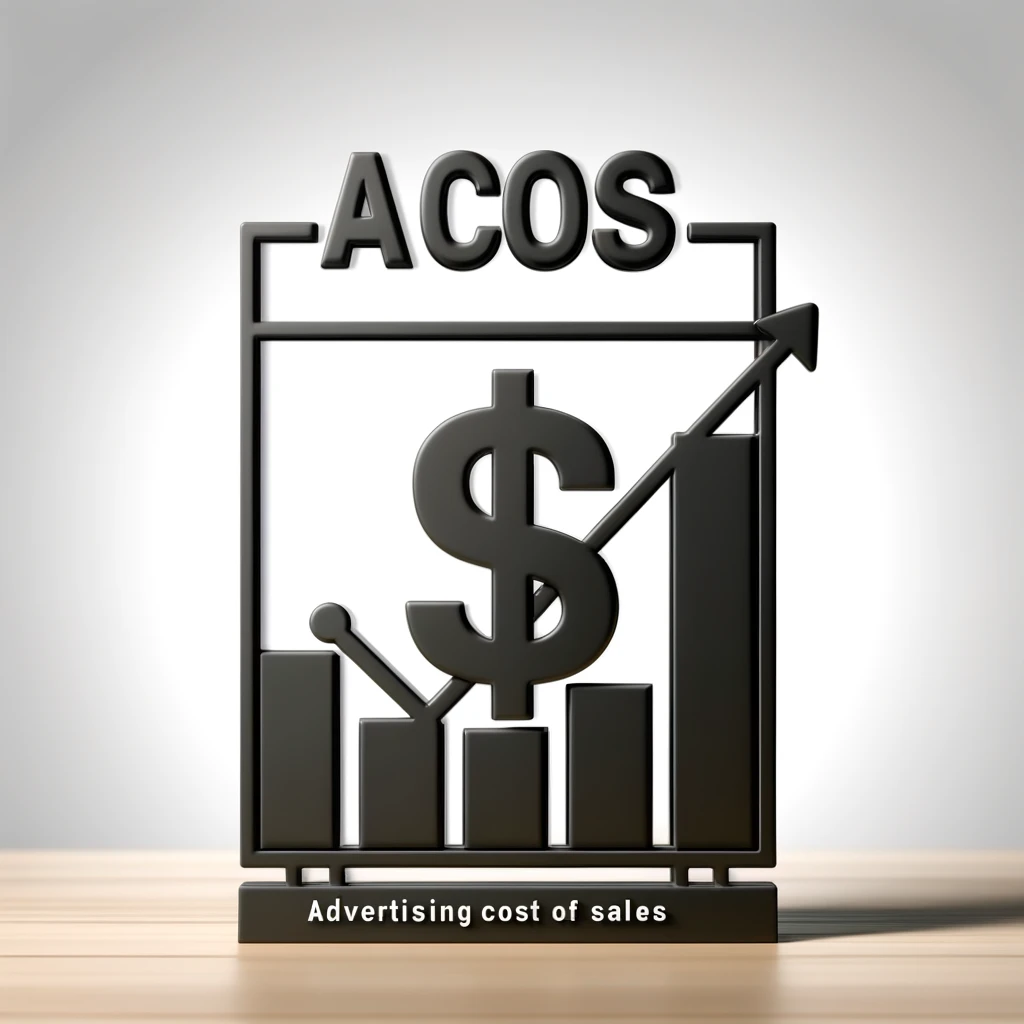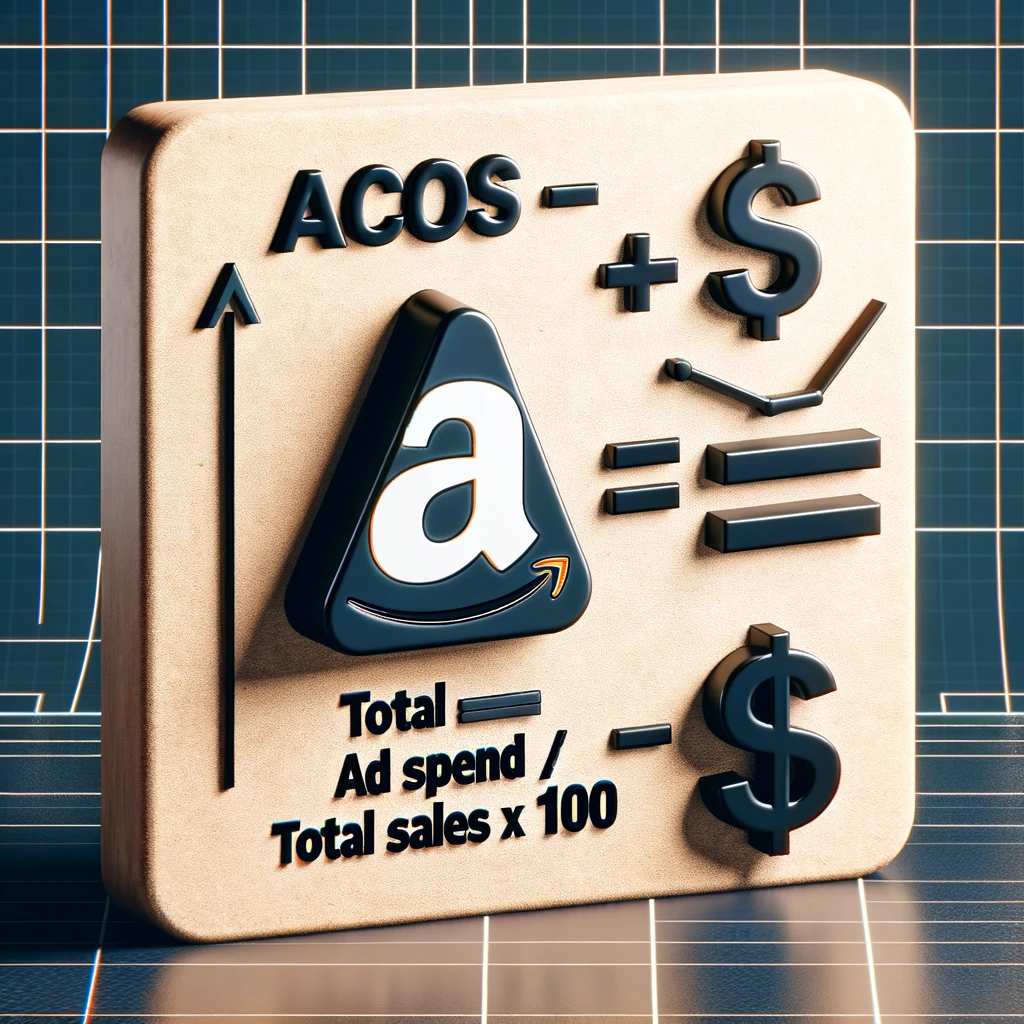Amazon ACoS: Master PPC Calculation & Optimization

I’ve been advertising on Amazon for many years and while Amazon ACoS isn’t the most important advertising metric it can be very important, and understanding this can be critical to your advertising success.
Ever wondered how sellers crack the code of selling on Amazon with sponsored products campaigns, sponsored products ads, and organic sales? Understanding Amazon ACos is your ticket to success. This metric isn’t just a number; it’s a game-changer for your sponsored products campaigns and advertising strategy. Dive into our guide to learn how to optimize your campaigns, boost sales, reduce advertising costs, and outshine competitors in the market. Get ready to transform your Amazon selling experience with actionable insights and proven tips for sellers in the market.
Key Takeaways
-
Understand Your Amazon ACoS: Knowing what ACoS (Advertising Cost of Sales) is and how it affects your Amazon advertising, profit margin, profitability, impressions, and revenue is crucial. It’s the ratio of ad spend to sales revenue.
-
Accurate Calculations Matter: Always calculate your ACoS accurately. Use the formula: ACOS = (Ad Spend / Sales) * 100. This helps in understanding the efficiency of your campaigns. Essentially, if this number is higher than your profit margin percentage, you are losing money on your campaign. However, if your goal is to run PPC to rank certain keyword phrases, you may be willing to “lose money” for a little while in return to higher organic rankings later. So, a high ACoS is not always bad.
-
Set Realistic Benchmarks: Identify what an ideal ACOS looks like for your business, considering metrics, goal, profit margin, and industry. Benchmarks and metrics can vary, but a lower ACOS generally means higher profitability for a business in the market with a better conversion rate.
-
Implement Effective Strategies: Use targeted keywords, refine your ad placements, and continuously optimize your campaigns to improve ACOS, impressions, and metrics while considering profit margin and market.
-
Monitor and Adjust: Regularly review your ACOS Amazon metrics. Make data-driven decisions to look at metrics, tweak your strategies, and ensure you’re not overspending on leads and profit margin.
-
Know Your Audience: Tailor your ads to meet the needs and interests of your target audience to maximize ROI, achieve a favorable ACOS, and improve metrics, revenue, leads, and profit margin.
Understanding ACOS Basics
Definition
Amazon ACoS stands for Advertising Cost of Sales. It’s a crucial metric for Amazon sellers. It helps assess the efficiency of advertising campaigns.
Ratio Explanation
ACoS is the ratio of ad spend to sales revenue rate. For example, if you spend $10 on ads and make $100 in revenue from sales, your ACoS is 10%. This ratio helps gauge campaign profitability. As I said earlier, short term low profitability or no profitability at all is not necessarily a bad thing if you are running a ranking campaign.
Impact of Competitiveness
Product category competitiveness affects ACoS Amazon values. In highly competitive categories, ACoS tends to be higher. This happens because more sellers are bidding for the same keywords, affecting ad click price and ad revenue, thus impacting profit margin.
Listing Quality
Listing quality also impacts ACoS Amazon. High-quality listings with good images and descriptions convert better, increasing ad click, price, and profit margin. Better conversion rates lead to lower ACoS.
Keyword Relevance
Keyword relevance plays a significant role in ACoS. Using relevant keywords ensures that ads reach the right audience, increasing click rates and boosting revenue and profit margin. This increases the chances of making a sale, thus lowering ACoS and improving profit margin and ad revenue.
Tools
Tools like Jungle Scout’s Advertising Analytics can help. They track ACoS alongside other important metrics. These include total sales and TACoS. Such tools provide a comprehensive view of your advertising performance, including profit, click rate, and revenue.
ACoS vs TACoS
ACoS focuses on the direct relationship between ad spend, revenue, profit, and sales. However, TACoS considers the total advertising cost relative to all sales, not just those driven by ad revenue or profit from each click. Both metrics are important for understanding your overall performance. As you start bringing in organic sales (sales not attributed to PPC advertising), you will see TACoS drop nicely and you can feel better about your advertising efforts at that point, even if your ACoS is higher than you’d like it to be.
Ideal ACOS and Benchmarks
Good ACoS
A “good” ACoS varies. It depends on the product and seller goals. Different products have different profit margins.
General Guidelines
ACoS percentages can be categorized:
-
Low: 15% or less
-
Average: 15%-30%
-
High: above 30%
These ranges are general. Specific targets depend on your ad budget, market conditions, profit, revenue, and click. I’ve even achieved ACos levels below 30% when running ranking campaigns. This is a really good sign that the keywords you are using fit very well with the product you are selling.
Evaluating TACoS
Evaluating ACoS alone isn’t enough. TACoS (Total Advertising Cost of Sales) gives a fuller picture. It measures ad spend relative to total sales, not just click ad-attributed sales.
Relevant Metrics
To understand performance, consider other metrics:
-
Impressions: How often your ad is seen.
-
Average Order Value (AOV): The average amount spent per order.
-
Profit Margin: Your net profit as a percentage of ad revenue and sales per click.
- Profit Margin %: If this number is lower than your ACos, then you are losing money on your advertising.
These metrics help refine your strategy, improve your campaigns, and increase ad revenue.
Strategies to Enhance ACoS
Keyword Bids
Adjusting keyword bids directly influences ACoS. Lowering bids can reduce costs, but it might also decrease ad revenue and visibility. Finding a balance is key. Higher bids increase visibility but may raise costs. Regularly monitor and adjust bids for optimal results.
Targeting Strategies
Refine targeting strategies to improve ad relevance. Use specific ASINs and keywords related to your products. This increases conversion rates and potentially lowers ACoS. Avoid broad keywords that attract non-buyers.
Bidding Strategies
Test different bidding strategies continuously. Try manual bidding first, then experiment with automated options. Evaluate which approach offers the best cost-effectiveness. Adjust based on performance data.
Ad Placements
Experiment with various ad placements within Amazon’s ecosystem. Sponsored Products, Sponsored Brands, and Sponsored Display ads all have different impacts on ACoS. Analyze which placement yields better returns.
Tools and Resources
Utilize tools like Amazon’s Campaign Manager for insights into ad performance. Third-party tools can provide additional analytics and optimization tips. These resources help refine your advertising strategy.
Closing Thoughts
You now have a solid grasp of ACOS and how it can impact your Amazon advertising strategy. By understanding the basics, calculating your ACOS, knowing the ideal benchmarks, and applying effective strategies, you’re well on your way to optimizing your ad revenue campaigns. Remember, ACOS isn’t just a number; it’s a tool to help you make informed decisions and maximize your ad spend.
Don’t just sit on this knowledge. Put these strategies into action and watch your Amazon sales soar. Keep experimenting, analyzing, and refining your approach to stay ahead of the competition. Got questions or need more tips? Feel free to reach out—we’re here to help you succeed. Happy selling!
Frequently Asked Questions
What is ACOS on Amazon?
ACOS stands for Advertising Cost of Sales. It measures the efficiency of your Amazon ad campaigns.
How do you calculate ACOS?
Calculate ACOS by dividing ad spend by sales and multiplying by 100. Formula: (Ad Spend / Sales) x 100.
What is an ideal ACOS?
An ideal ACOS varies by business, but generally, a lower ACOS indicates better ad performance. Aim for 15-20% when you are trying to maintain your rankings and it is okay to be above 30% for a certain period of time if you are seeking to rank your product for targeted keywords. You just need to decide how much you are willing to spend or lose to get ranked for your target keywords. I’d recommend starting with some easy keyword phrases to rank for first before moving on to hard ones.
Why is understanding ACOS important?
Understanding ACOS helps optimize ad spend and maximize ROI, ensuring your ads are cost-effective.
How can I improve my ACOS on Amazon?
Improve ACOS by refining keywords, optimizing bids, and enhancing product listings to increase conversions.
Are there benchmarks for good ACOS in different industries?
Yes, benchmarks differ across industries. Research industry-specific benchmarks to gauge your performance accurately.
What strategies can enhance my ACOS?
Use targeted keywords, adjust bids based on performance, and continually test ad variations to find what works best

